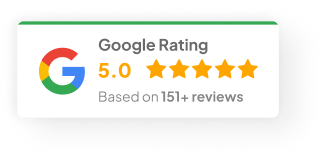25 Sep 25
Why Your Web Page Design for Footer Matters More Than You Think
When most folks talk about web design, the footer barely comes up. It’s all about the hero image, menus, the “above-the-fold” stuff. But the footer quietly does a lot of heavy lifting. And when it’s ignored, it shows.
The footer isn’t just filler space. It shapes user experience, builds trust, and yes—it even impacts SEO and conversions. That little strip at the bottom can make or break the way people leave your site.
1) People Actually Scroll Down There
Sounds odd, but plenty of visitors do hit the bottom of the page.
And they don’t do it by accident. Usually they’re looking for:
- Contact details
- Legal info
- A secondary menu or quick links
If those aren’t there? Visitors bounce. The footer is often the last chance to give them what they came for.
2) Navigation and Accessibility
Think of the footer like a second set of doors. The main navigation covers the big stuff—services, products, blog. The footer handles the essentials.
That’s where people expect to see:
- Phone, email, and physical address
- Policies (privacy, terms, disclaimers)
- FAQs, site map, job listings
- Social icons
It’s also where accessibility matters. A footer that’s clear, structured, and easy to scan helps every visitor, including those with disabilities. It’s not just a user-friendly move, it’s protection from compliance issues too.
3) Conversions Live Here Too
This part surprises a lot of business owners: the footer isn’t just informational, it can actually push conversions.
Here’s why: when someone scrolls to the bottom, they’re often at a decision point. If the footer offers a simple call-to-action, it can tip them over the line. The footer is basically the quiet closer. It doesn’t shout, but it reassures and nudges.
4) SEO Gets a Boost Too
Search engines pay attention to what’s down there. Internal links in footers help crawlers map out your site. Linking to FAQs, careers, or smaller pages gives your site a more complete structure.
But it’s easy to go too far. Stuffing dozens of links or keywords into a footer looks spammy and can hurt rankings. A better approach is to keep it lean, relevant, and clear.
And for local businesses, listing an address in the footer adds credibility and supports local SEO signals.
How People Actually Scroll
User behavior research shows something interesting. The Nielsen Norman Group found:
- 57% of viewing time happens above the fold
- Attention fades while scrolling
- But spikes again at the very bottom
That spike matters. Fewer people get there, but the ones who do are intentional. They’re checking for details before making a decision. Miss that chance, and you miss them.
What a Strong Footer Looks Like
A good footer doesn’t have to be complicated. It just needs to be clean and functional. Some best practices:
- Group related links together
- Add one clear CTA (like a newsletter signup or contact button)
- Use consistent branding—colors, fonts, tone
- Keep it mobile-friendly with readable text and big tap areas
- Drop in trust signals if relevant (SSL badges, awards, certifications)
Mistakes That Hurt
It’s easy to get this wrong. Some of the most common mistakes are:
- Cramming in too many links or widgets
- Tiny text that’s impossible to read
- Keyword stuffing for SEO
- Old addresses, phone numbers, or broken links
- CTAs that don’t make sense for the page
All of these chip away at credibility.
Wrapping It Up
The footer isn’t decoration. It’s prime digital space that builds trust, guides users, and even helps conversions and SEO.
Think of it like a safety net and a final pitch rolled into one. If someone scrolls all the way down, they’re giving the site one last shot to prove itself. Make that shot count.


